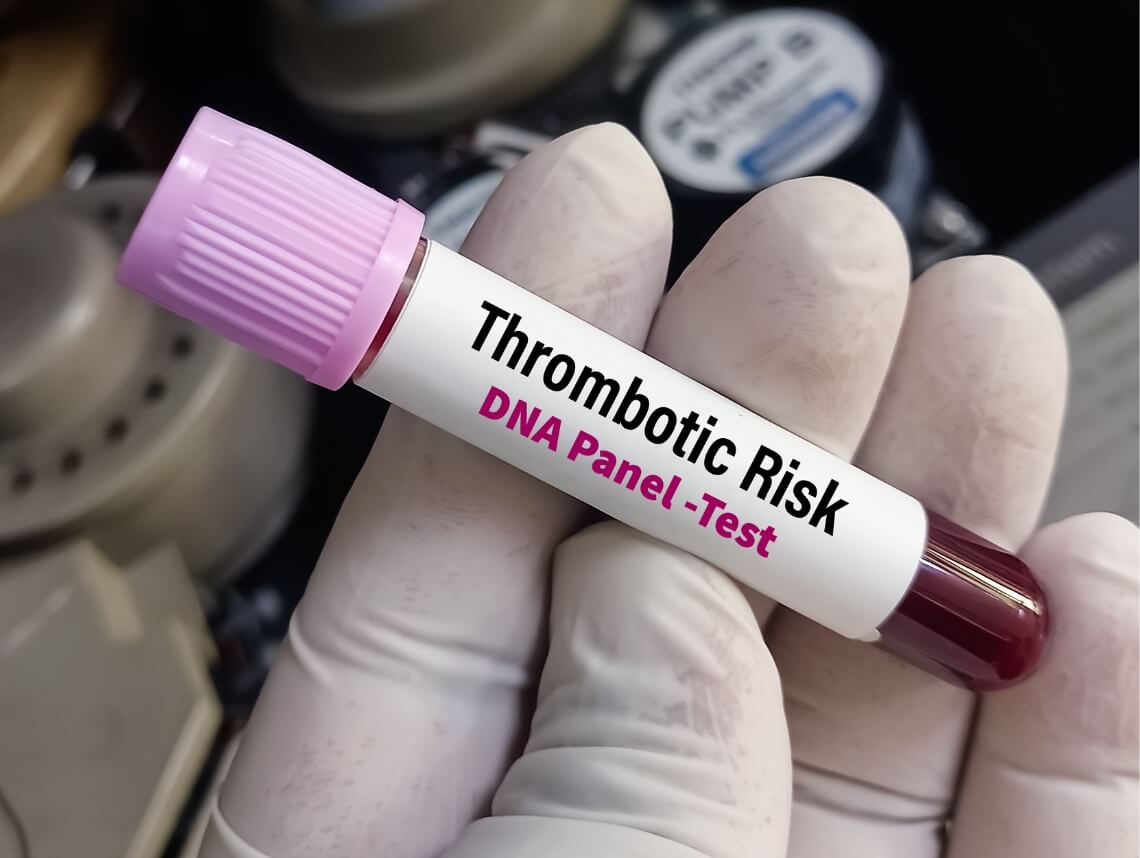As a parent, finding out your child has a rare blood condition can be a scary experience and come with many questions. Although thrombophilia is a condition that increases the risk of developing dangerous blood clots, it is treatable, and many patients can successfully manage their diagnosis.
Learning about thrombophilia and treatment options is an essential first step to help you take a positive and supportive role in your child’s treatment and care. To help, we’re sharing this helpful guide with important information, including the causes, symptoms, and how to meet care needs for thrombophilia in children.
What is thrombophilia?
Thrombophilia is a disorder affecting the way blood clots. Clotting, also called coagulation, is the way blood turns from a liquid to a gel and is essential to the healing process for wounds and surgical incisions. When thrombophilia develops, the blood will clot too easily and/or stays coagulated for too long once it clots.
This can increase the chance of dangerous clotting or thrombosis, which can cause blockages in blood flow. If left untreated, dangerous clots related to thrombophilia can cause complications, including heart attacks, deep vein thrombosis, strokes, and breathing problems in the most severe cases.
What are the causes of thrombophilia?
There are two main types of thrombophilia: genetic and acquired. The gene that causes genetic thrombophilia can be inherited from either the mother or the father and affects how the body produces the key protein needed for clotting.
Certain external factors, including medicine, other diseases, or lifestyle factors can cause acquired thrombophilia. The most common form of acquired thrombophilia is related to antiphospholipid antibody syndrome, a condition where the body mistakenly attacks proteins in the blood.
Thrombophilia Symptoms
In many cases, thrombophilia may not cause symptoms, as this condition mainly increases the risk of dangerous blood clots. Warning signs that a child may have thrombophilia that is causing blood clots include:
- Pain and swelling in a specific area
- Chest pain
- Difficulty breathing
- Increased heart rate
- Nausea
- Sweating
- Light-headedness
Often, symptoms will depend on the location of the clot, with clots in the extremities causing pain and swelling in the arms or legs, while abdominal clots can cause nausea and vomiting.
Diagnosing Thrombophilia
Children exhibiting any potential signs or symptoms of thrombophilia should receive immediate medical attention. This condition is often not diagnosed until symptoms of dangerous clotting develop, but many parents also test children with a higher risk or family history of developing thrombophilia.
Diagnostic steps usually include:
- Review of medical history
- Physical examination
- Blood tests
- Genetic testing
- Tests such as ultrasound or magnetic resonance imagery (MRI) and venography to detect blood flow and look for clots
Once the condition is diagnosed, parents can work with pediatricians and other providers to develop an effective treatment plan.
Treating Thrombophilia in Children
Upon diagnosis of thrombophilia, the most common form of treatment will be medication in the form of anticoagulants. These will help to thin the blood and reduce the risk of dangerous clot formation. In emergencies, clot-dissolving medications called thrombolytics can also be administered.
In severe cases, emergency surgery to remove blood clots may be required. This is typically a last resort measure for clots that have the potential to be life-threatening or cause serious complications. Recovery from surgery will usually require extensive rehabilitation and hospitalization to monitor for post-surgical complications, particularly in younger children.
Caring for a Child With Thrombophilia
For children with thrombophilia, the required care depends on the severity of the condition and the risk for dangerous development of blood clots. Children may have multiple follow-up appointments and need to take medication regularly. In some cases, children with this condition may have nutritional needs and benefit from supportive clothing, such as compression garments that can reduce the risk of clotting.
Families that need to balance the needs of other family members and busy schedules with thrombophilia care needs often benefit from pediatric home health services. A dedicated and highly trained home health registered nurse (RN) or licensed practical nurse (LPN) can assist with a wide range of services as part of a flexible care plan. Specific aspects of care can include respite care, helping with therapy exercises, and administering medication.
Contact Care Options for Kids for Home Health Care
It can be hard to balance your time between work, home, and caring for a child. That’s why our team of professionals at Care Options for Kids is here to help. We have been enforcing precautionary measures and following the Centers For Disease Control (CDC) guidelines for COVID-19 to ensure the safety and health of our clients and employees.
Our home health care services offer support one-on-one in the comfort of your home. We refer loving and competent nurses to provide customized care for families — from a few hours a day to around-the-clock supervision. Contact us directly to speak with a home health care professional or request a free Pediatric Consultation. Together we can determine the best plan of action to keep your loved ones happy and healthy.
If you or a loved one are considering Pediatric Home Health Care Services, contact the caring staff at Care Options for Kids. Call today at (888) 592-5855.






